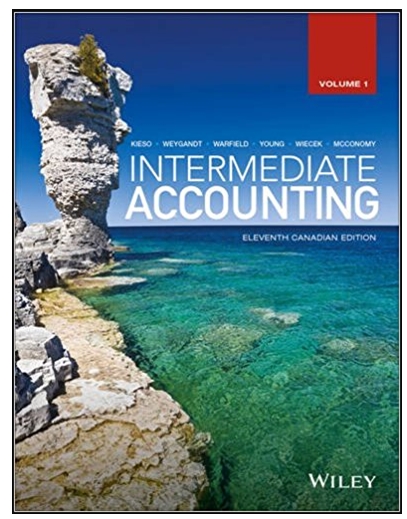The unadjusted trial balance of Imagine Ltd. at December 31, 2017 is as follows: Additional information: 1.
Question:
The unadjusted trial balance of Imagine Ltd. at December 31, 2017 is as follows:
.png)
Additional information:
1. On November 1, 2017, Imagine received $10,200 rent from its lessee for a 12-month lease beginning on that date. This was credited to Rent Revenue.
2. Imagine estimates that 7% of the Accounts Receivable balances on December 31, 2017, will be uncollectible. On December 28, 2017, the bookkeeper incorrectly credited Sales Revenue for a receipt of $1,000 on account. This error had not yet been corrected on December 31.
3. After a physical count, inventory on hand at December 31, 2017, was $77,000.
4. Prepaid insurance contains the premium costs of two policies: Policy A, cost of $1,320, two-year term, taken out on April 1, 2017; Policy B, cost of $1,620, three-year term, taken out on September 1, 2017.
5. The regular rate of depreciation is 10% of cost per year. Acquisitions and retirements during a year are depreciated at half this rate. There were no retirements during the year. On December 31, 2016, the balance of Equipment was $90,000.
6. On April 1, 2017, Imagine issued at par value 50 $1,000, 11% bonds maturing on April 1, 2020. Interest is paid on April 1 and October 1.
7. On August 1, 2017, Imagine purchased at par value 18 $1,000, 12% Legume Inc. bonds, maturing on July 31, 2019. Interest is paid on July 31 and January 31.
8. On May 30, 2017, Imagine rented a warehouse for $1,100 per month and debited Prepaid Rent for an advance payment of $13,200.
9. Imagine's FV-NI investments consist of shares with total market value of $9,400 as at December 31, 2017.
10. The FV-OCI investment is an investment of 500 shares in Yop Inc., with current market value of $25 per share as at December 31, 2017.
Instructions
(a) Prepare the year-end adjusting and correcting entries for December 31, 2017, using the information given. Record the adjusting entry for inventory using a Cost of Goods Sold account.
(b) Indicate which of the adjusting entries could be reversed.
Par value is the face value of a bond. Par value is important for a bond or fixed-income instrument because it determines its maturity value as well as the dollar value of coupon payments. The market price of a bond may be above or below par,...
Step by Step Answer:

Intermediate Accounting
ISBN: 978-1119048534
11th Canadian edition Volume 1
Authors: Donald E. Kieso, Jerry J. Weygandt, Terry D. Warfield, Nicola M. Young, Irene M. Wiecek, Bruce J. McConomy





